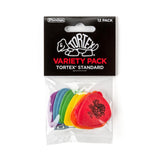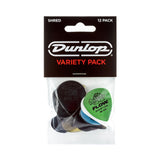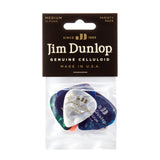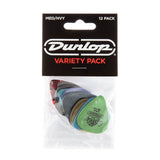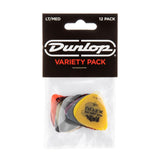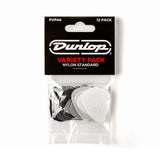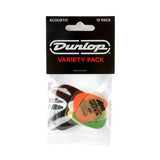Cleaning and maintaining your guitar hardware, fretboard, and body is essential to the long life and reliable performance of your instrument. Unclean hardware can lose its integrity over time, while treating your fretboard ensures the best possible performance as well as extending the lifespan of your guitar.
In a continuation of our series empowering guitarists to do their own maintenance, Part 4 of our Setup Guide deals with all things cleaning. However if you’re just joining us, make sure you start at Part 1 to ensure your guitar is playing its best.
Guitar Setup EssentialsThe following list of tools are an essential purchase for any self respecting guitarist. Playing the guitar is a symbiotic relationship, look after your instrument and it will look after you!
- Guitar Tuner
- Allen Keys (Hex Wrenches)
- Ruler
- Nut Files
- Strings
- String Cutters
- Fretboard Oil
- Fret Polish
- Cleaning Cloths
- Screwdriver
- Body Polish
- Workbench Mat
- Neck Rest
The best time to clean your guitar is when you’re changing your guitar strings, as it allows you to get into all the nooks and crannies of your hardware, ensuring no dirt is hiding in the small delicate parts of your instrument. There are plenty of guides and videos on the web of how to change your strings, but before you put that new set back on, make sure you take the chance to give your guitar some TLC and before you do anything, make sure to wash your hands!
How To Clean Your FretboardCleaning is crucial to the longevity of your guitar and as the most used part of your instrument, the fretboard is the best place to start. When you sweat all over your guitar, it dries and evaporates, causing the wood itself to become dehydrated. This can lead to cracks developing as well as marks and stains that if left untreated become unremovable. This build up of dirt and grease can also cause permanent damage to the fretboard in particularly bad cases.
First we’re going to start with getting rid of that fretboard muck. There are a lot of products recommended across the web for doing this, including Window Cleaner and White Spirit, but in our experience a clean cloth with some good old H 2O is the best thing for your fretboard, especially if it’s Maple. Make sure your cloth is wet but not sopping and if you have a lot of gunk on your guitar, then expect to use some elbow grease to get rid of the particularly gunky stuff.
If you have a Rosewood, Ebony, or other dark wood fretboard and it is particularly bad, then you can use a guitar pick or plastic card to shift some of the harder muck, however make sure to always go with the grain of your fretboard when doing this, as going across can result in unsightly scratch marks. To clean the tight spaces between the fretboard and the frets themselves you can use your guitar picks, plastic cards or wooden toothpicks which work really well. Here you have to go against the grain of the fretboard but just be gently to ensure no damage is done.
This is a job best done taking your time and exhibiting patience, as it is with most tasks in guitar setup. It can be a laborious task, particularly if you’ve not done if for a while but you will reap the rewards once it’s done!
Polishing FretsNow that we’ve removed all that muck and grime from your fretboard it’s time give some love to your frets. There are several ways you can do this but the most common way is to use ultra-fine 0000 steel wool. It’s recommended that you use masking tape to cover your fretboard in between the frets when doing this as small flecks of steel can go everywhere, you’ll also want to cover your pickups as the steel will be attracted to them. It’s also recommended that you wear a mask (you’ve probably got a few lying around the house by now!) when performing this task, as those tiny steel particles are easily inhaled.
A handy alternative to using steel wool is D’Addario’s Fret Polishing System, which gives you 5 sheets of fret polishing paper, plus a really useful template ‘guide’ that fits over your frets, allowing you to buff them to a brilliant shine. Polishing your frets can have a beneficial affect on your instrument’s performance and tone, so it’s definitely worth taking the time to do it.
Conditioning your FretboardConditioning your ensures great performance as well as long life and has the added bonus of making your fretboard look brand new. There are different steps depending on which kind of fretboard as listed below:
Rosewood/Ebony/Etc.With a Rosewood, Ebony, Pau Ferro, or any other ‘dark’ wood fretboard you can use pretty much any kind of fingerboard cleaner or fretboard conditioner. We love Dr Duck’s Ax Wax and Jim Dunlop’s Fretboard 65 Lemon Oil but there are plenty of other options available. When using the conditioner or cleaner, be sure to apply to your cloth rather than directly onto the fretboard, and be sure to use it sparingly to avoid over saturation of the fretboard.
Maple FretboardsMaple Fretboards do not mix well with any type of conditioner or cleaner, so if you’re looking to buff your Maple fretboard to a bright shine, just stick with a dry cloth to prevent any dulling of the lacquer.
Check HardwareWhilst you’ve got your strings off, it’s a good chance to check your machine heads and bridge out to give them some cleaning and maintenance. Ensuring clean hardware expands the lifespan of your instrument as well as improving performance.
Guitar TunersDepending on the type of tuners you have, it’s good to check the nut on the face of the headstock to see if it’s come loose and tighten if necessary. On the back side of the headstock you can check your screws if your guitar has them and make sure they’re tight. Be gentle with them, especially the small screws at the back as they can get damaged under excessive pressure. Also if you have open gear tuners, you can add a drop of light oil to them to ensure they’re performing their best! Once you’re done checking your tuners out, give them a wipe down with a clean cloth for added shine.
Guitar BridgesGiving your bridge a proper deep clean is much easier with the strings off. There are some metal polishing products you can use, but as always nothing beats a damp cloth and some elbow grease. If you have gold hardware we'd recommend steering clear of any cleaning products unless they're specified for use on gold-finished hardware, as you'll likely end up removing the shiny coating.
If you have a guitar with individual saddles, you can remove them and clean in some warm water individually to really get them nice and shiny. Bear in mind you'll have to reset the intonation of your guitar if you do this.
How To Polish A GuitarAs with your fretboard, the finish of your guitar body plays a big part in how you go about cleaning it. Cleaning your guitar body the wrong way can wear your finish, which may not be the look you’re going for.
Nitrocellulose FinishesA lot of vintage instruments have Nitrocellulose finishes and this makes them more susceptible to wear and tear. Nitrocellulose is a thinner, softer lacquer and it’s what gives a vintage guitar part of it’s charm and character. It is susceptible to thin cracks appearing on the body and discolours over time, which you’ll often see those who like to ‘relic’ guitars attempting to replicate.
With any Nitro finish we would recommend steering clear of cleaning products, whether it’s a vintage instrument or something newer. Whenever you polish a Nitro finish you’re essentially taking off a thin layer, which overtime can degrade the look of the guitar.
Matte/Silk FinishMore rarely you’ll get a guitar with a Matte or Satin finish and these also require different treatment. As with a Nitrocellulose finish we’d recommend steering clear of cleaning products, not because they’ll damage the finish but because they’ll cause it to go shiny. We presume this is the opposite of what you wanted when your purchased a Matte/Satin finish guitar.
There are a few products dedicated for matte finishes, but we’d recommend starting with a clean, damp cloth to clean it, then finishing up with a different dry cloth to hover up any leftover water. This ensures you get a nice clean guitar body without causing any shiny patches to appear.
Polyurethane FinishesPolyurethane is a far thicker finish and was used from the late 60s up until the present day. Thanks to its thicker composition, it doesn’t crack like Nitrocellulose and can put up with a lot more abuse. Poly finishes are also very glossy, so look great once you’ve buffed them up a bit!
On Poly finishes you can use pretty much any dedicated guitar cleaning product and so long as it’s a sensible amount, you won’t damage your guitar’s finish. Again spray onto the cloth rather than directly onto the body, and gradually work your way over the front and back of the guitar until you’re happy.
In ConclusionTaking care of your guitar can seem like a chore, but it’s one of those long term investments that pays back tenfold over time. Cleaning and Polishing your guitar is about more than just making it look nice, it’s part of the overall package that improves the way your guitar looks, plays, and sounds!
If you’re missing something from this article then check out all our Guitar Cleaning & Maintenance Gear.
More in This SeriesPart 1 - Truss Rod Adjustment
Part 2 - Adjusting the Action
Part 3 - Know Your (Guitar) Nuts
Part 4 - Keeping Things Clean
Part 5 - Intonation Adjustment
Part 6 - Pickup Height

















